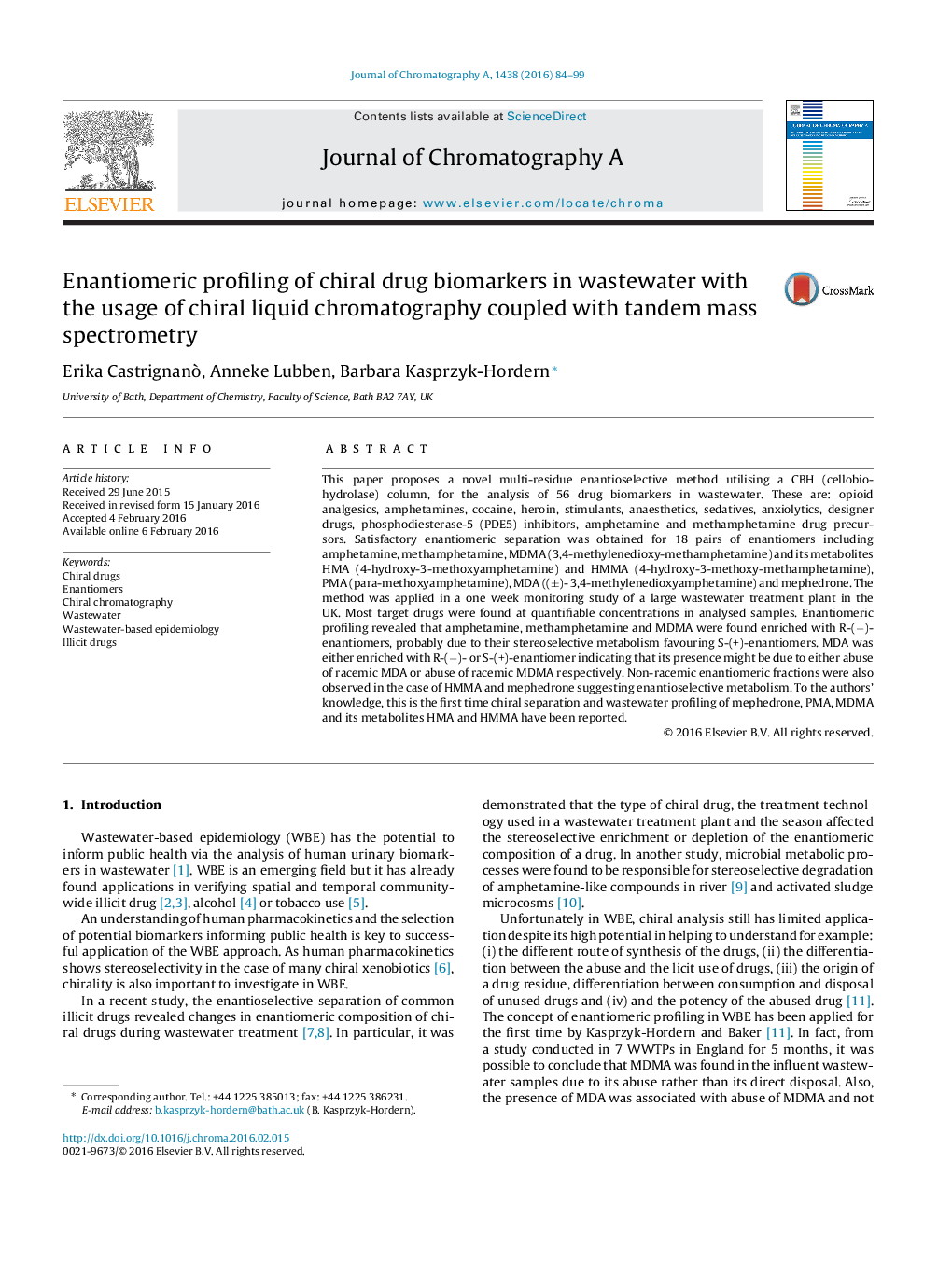| Article ID | Journal | Published Year | Pages | File Type |
|---|---|---|---|---|
| 7610168 | Journal of Chromatography A | 2016 | 16 Pages |
Abstract
This paper proposes a novel multi-residue enantioselective method utilising a CBH (cellobiohydrolase) column, for the analysis of 56 drug biomarkers in wastewater. These are: opioid analgesics, amphetamines, cocaine, heroin, stimulants, anaesthetics, sedatives, anxiolytics, designer drugs, phosphodiesterase-5 (PDE5) inhibitors, amphetamine and methamphetamine drug precursors. Satisfactory enantiomeric separation was obtained for 18 pairs of enantiomers including amphetamine, methamphetamine, MDMA (3,4-methylenedioxy-methamphetamine) and its metabolites HMA (4-hydroxy-3-methoxyamphetamine) and HMMA (4-hydroxy-3-methoxy-methamphetamine), PMA (para-methoxyamphetamine), MDA ((±)- 3,4-methylenedioxyamphetamine) and mephedrone. The method was applied in a one week monitoring study of a large wastewater treatment plant in the UK. Most target drugs were found at quantifiable concentrations in analysed samples. Enantiomeric profiling revealed that amphetamine, methamphetamine and MDMA were found enriched with R-(â)-enantiomers, probably due to their stereoselective metabolism favouring S-(+)-enantiomers. MDA was either enriched with R-(â)- or S-(+)-enantiomer indicating that its presence might be due to either abuse of racemic MDA or abuse of racemic MDMA respectively. Non-racemic enantiomeric fractions were also observed in the case of HMMA and mephedrone suggesting enantioselective metabolism. To the authors' knowledge, this is the first time chiral separation and wastewater profiling of mephedrone, PMA, MDMA and its metabolites HMA and HMMA have been reported.
Keywords
Related Topics
Physical Sciences and Engineering
Chemistry
Analytical Chemistry
Authors
Erika Castrignanò, Anneke Lubben, Barbara Kasprzyk-Hordern,
